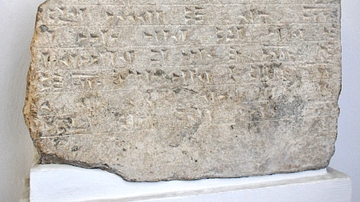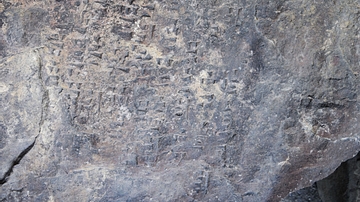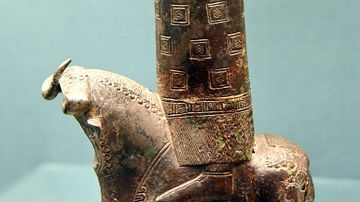Illustration
This is a dedication to the god Haldi, the supreme god of the Urartians, from a temple built by Menua, son of Ishpuini, king of Urartu (reigned 810-786 BCE). It is written in Urartian cuneiform writing. From Toprakkale or Van, Eastern Anatolia, in modern-day Turkey. Urartian, c. 700 BCE. (The British Museum, London).
About the Author
Cite This Work
APA Style
Amin, O. S. M. (2018, November 29). Fragmentary Urartian Royal Inscription. World History Encyclopedia. Retrieved from https://www.worldhistory.org/image/9544/fragmentary-urartian-royal-inscription/
Chicago Style
Amin, Osama Shukir Muhammed. "Fragmentary Urartian Royal Inscription." World History Encyclopedia. Last modified November 29, 2018. https://www.worldhistory.org/image/9544/fragmentary-urartian-royal-inscription/.
MLA Style
Amin, Osama Shukir Muhammed. "Fragmentary Urartian Royal Inscription." World History Encyclopedia. World History Encyclopedia, 29 Nov 2018, https://www.worldhistory.org/image/9544/fragmentary-urartian-royal-inscription/. Web. 16 Apr 2025.








